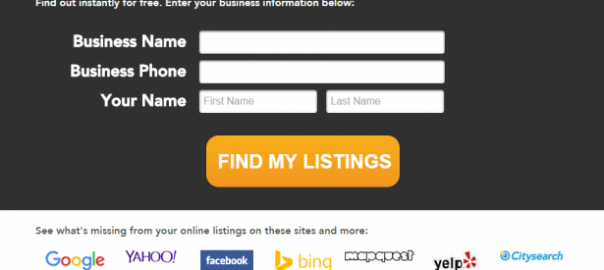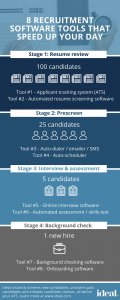
For a small business owner, marketing might be the last thing on your mind. You have a business to run, after all. Depending on your business, you might have to:
- Check and order inventory.
- Schedule appointments with clients.
- Respond to any customer inquiries.
- Manage your employees.
- Organize your finances.
And that doesn’t even begin to cover all of the responsibilities.
It’s difficult enough to find enough time to manage the day-to-day demands of a business. How on earth are you supposed to keep up with the latest fancy trend in marketing?
But without marketing, your business can quickly grow stagnant. So, here are the five areas of digital marketing that you need to focus on the most.
Content Marketing
When consumers have a question or want to know information about a product or service, they go online and search for it.
Content marketing involves creating blog posts, videos, lists, ebooks, etc. that serve to address and answer the questions relevant to your brand or industry and provide additional information.
When consumers realize that you’re the company with all the answers, it makes you seem the most knowledgeable, and therefore the most trustworthy. And consumers prefer to do business with companies and brands they trust.
Initially, it can take some time and patience to create quality content, but with keyword research and the right SEO tactics, it can help your business’ name reach a wider audience, and can even establish you in the industry as a thought-leader.
Without content marketing for your small business, you run the risk of consumers not fully understanding what you have to offer. Plus, if someone else is answering the questions your potential customers are asking, you’re losing business to the company that can answer their questions.
But before you can even think of optimizing for SEO, you want to make sure your content is readable, eye catching, and free of any grammatical errors. You can use a site like CoSchedule to craft creative and efficient titles for your content, and then use tools like Grammarly and Hemingway Editor to make sure it’s grammatically correct.

Source: Hemingway Editor
Paid Advertising
Yes, advertising means spending money, but don’t write it off just yet. Just optimizing your site and content for SEO or doing other forms of free marketing may seem like the better options, but in reality, it takes a lot of time and knowledge to do both, and neither of them guarantees a positive outcome.
Paid advertising has a much higher chance of paying off for your small business than free marketing tactics and search engine optimization.
Social media advertising is actually a pretty cost-efficient way to promote your brand or business. It can help you boost the posts with the content you’ve created, which can ultimately drive traffic back to your website.
Plus, Facebook advertising has evolved over time and now lets you get extremely specific with your location-targeting. Which is great for small businesses who serve mostly local customers. You won’t be wasting money showing your ad to people who are too far away to care about your company.
Outside of social, you can also use display or pay per click advertising. While the bigger ad networks are usually too competitive (and expensive) for small or even mid-sized businesses, alternative ad networks can cost a lot less per click but still show your ads to relevant consumers on smaller, more targeted sites.
Networking
LinkedIn and Facebook Group pages allow you to connect with professionals within the same industry that aren’t close enough to be considered direct competition. Within these groups, you can discuss business strategies that have worked, find out what hasn’t worked, and share tips and tricks for improving your company.
Building relationships with other professionals can even work up to recommendations and other forms of publicity, too. Without networking, you have no way to connect with others in your industry, so you’ll never know what others are doing.
Co-marketing is another great way to network your small business, but within your local community. With co-marketing, you can pair up with other businesses in your local community to help bring attention and more business to one another. You can do everything from offer coupons and discounts for each other’s business, to simply speaking often and positively about one another. It’s a great way to spread the word within your local community without much cost to you.
Social Media
If you decide to do content marketing, social media is a great way for you to share the content you’ve created with your customers and followers. Beyond that, social media also gives you the opportunity to share helpful content from others in your industry, which can help you build a relationship with them and spark a conversation.
If you don’t currently have any social media profiles for your business, you’re missing out on the opportunity to freely engage with potential consumers and humanize your brand.
In order to share your content, you’ll want to make sure you set up a Facebook Business Page. This is especially helpful if you don’t have a primary website. (Although, you can use sites like Wix and WordPress to easily create eye-catching websites.) A business profile will give you a place to share and your customers a place to comment, and also allows for various CTA’s to be placed throughout the page.

Source: Facebook
Beyond using social media to share your content, there are also a few other tools you can use to fully utilize it for your marketing efforts.
Buffer is a great free tool, because it allows you to schedule your posts ahead of time. This means that you won’t have to constantly worry about making sure you’re in front of a computer when you need to post an update. The free version will also break down some analytics, such as how many clicks and shares your post got, but you can access more analytics with an upgraded account.
Sharing images with your content will not only make your post more noticeable, but people are also more inclined to share creative visual content.
Canva is a free site that makes creating images for your content and social media posts simple. In fact, there are even presized templates for the type of post you want to create and where you want to share it.
Adobe Spark is another nifty tool you can use to quickly craft images, like the one below. This image took less than five minutes to make, and if you share it directly from Adobe’s site, the watermark in the corner disappears.

Spark gives you plenty of templates and color palettes, so even if you aren’t the most artistic person in the world, you can still have eye-catching images for your website or social profile.
Along with static images, you might even want to consider using Live Video as another form of visual content. You don’t need a crazy professional team to help you with this. That’s the whole point of Live Video – it’s supposed to look user-generated, and sharing that type of content humanizes your business.
Monitoring Your Reputation
As a small business, gaining the trust of consumers can make or break your company. Even one bad review out there can hurt you a lot more than the bigger companies. You want to make sure that you’re keeping a close eye on what people say about you and your business online.
If you don’t monitor your business’ reputation, you’ll never know what people are saying about it. You won’t know if you’re making customers unhappy, therefore you won’t know if there’s anything to fix.
So, to monitor your reputation, you’ll first want to make sure any online directory listings are correct and up-to-date. It’s bad for business if customers can’t even get a hold of you because your old phone number is still listed or your hours are incorrect.
Monitor listings on Yelp, Google Maps, Facebook, MapQuest, and more using a site like Yext, which allows you to go through and correct all the listings in one place. Also, don’t forget to claim your business on these sites, too.

Source: Yext
One other simple way to monitor your reputation is through Google Alerts. Setting up a Google Alert is easy, and it’s essentially a customized search that notifies you when new content is added containing keywords that you’ve specified.
Twitter is also extremely helpful in online monitoring. Not only will you receive alerts when you’re mentioned, but you can also set up Twitter Dashboard, which is great for small businesses to monitor any discussion about their products, relevant keywords and hashtags, or any other mentions that aren’t directed at the business with the “@” symbol.
Complaint Search Box is another helpful search website that’s preset to perform a specialized Google search on over 40 complaint websites, so you only have to go to one place to monitor the main complaint sites.
And, if it wasn’t before, Angie’s List should be on your radar as well. A lot of monitoring sites didn’t look at Angie’s List, because you had to pay to be a member. With the recent announcement that Angie’s List is now free, this means that anyone can see and review your business on Angie’s List.
Marketing your small business can seem like a handful, but it’s not impossible. Even using just a few of these tools (which happen to all be free) can get you on the right path to maintaining your business’ reputation and taking control of your marketing efforts.
Business & Finance Articles on Business 2 Community(58)
Report Post






